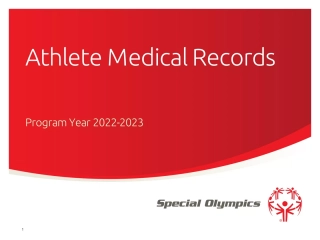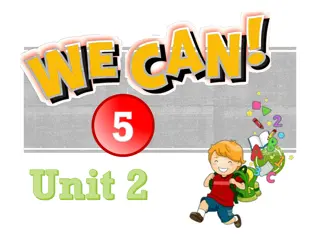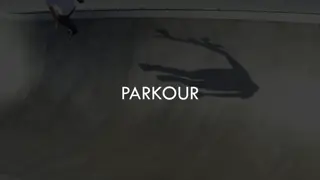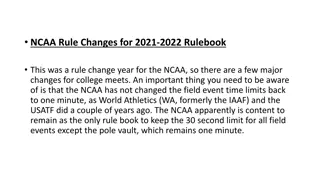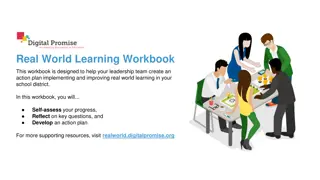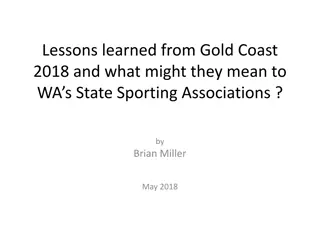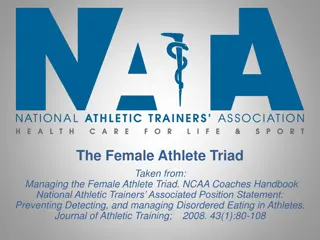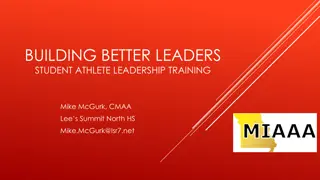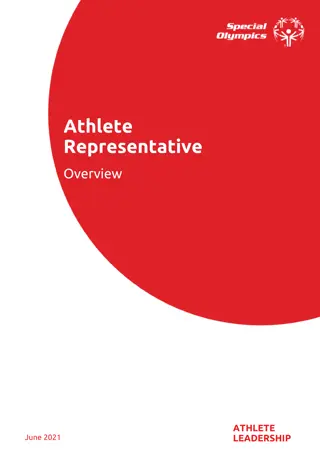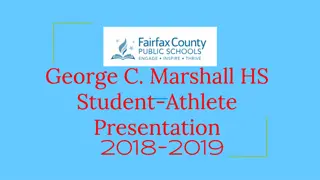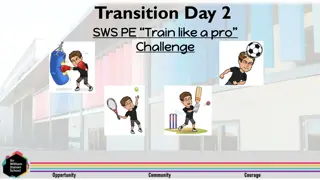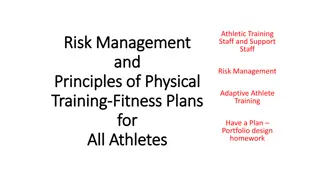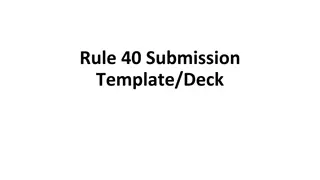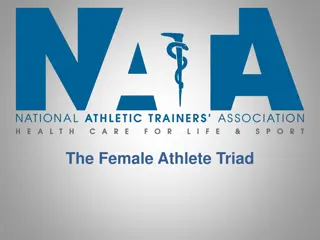
Crafting Your Impactful Story as an Athlete and Global Messenger
Discover how to effectively share your story as an athlete and global messenger to create a positive impact. Learn important tips and insights on building your narrative, recognizing your strengths, and connecting with others through powerful storytelling methods.
Uploaded on | 3 Views
Download Presentation

Please find below an Image/Link to download the presentation.
The content on the website is provided AS IS for your information and personal use only. It may not be sold, licensed, or shared on other websites without obtaining consent from the author. If you encounter any issues during the download, it is possible that the publisher has removed the file from their server.
You are allowed to download the files provided on this website for personal or commercial use, subject to the condition that they are used lawfully. All files are the property of their respective owners.
The content on the website is provided AS IS for your information and personal use only. It may not be sold, licensed, or shared on other websites without obtaining consent from the author.
E N D
Presentation Transcript
Athlete Spokesperson/ Global Messenger Participant Workbook June 2021
Lesson 1: Sharing your Story
Instructions 1 2 Readwhatyouneedto doinorder to share your story with others andcreate impact. For the activities, do one of the following: Print out and complete by hand. Complete on your computer and save. Lesson1: SharingYourStory Welcometo myworld! How Benremindspeopleabout how hispoint of viewisdifferent. We will begin this lesson looking at a video of Special Olympics athlete and staff member,BenCollins, http://www.espn.com/video/clip?id=23916328. 3
ACTIVITY #1 After seeing Ben svideo, let usthink about the following questions. Why is it important to share Ben s story with others? What are someof the things that couldhappento peoplewho seesBen sstory? Whyyourstory matters? Connecting people to the movement will make people care about you, your story, and Special Olympics. Realstoriesthat come from you show how you area leader and whyyour experience matters. Remember: You do not have to be a great public speaker to share your story. We mostly share our storiesthrough speechesbut there aremanyother waysto get yourstoryout thereandwe will lookat allof thoseoptionsinthis course. 4
ACTIVITY #2 Before you start building your story, it is important to get comfortable thinking about yourself and your life. Tohelp with this process, think about your answersto the questions below. Please tell us about your proudest or more memorable moments. How did you feel during this moment? How haveyou acted asa leaderon or off the field? How does your story show your talents &skills? What isone thing youwant everyoneto know about you? What isyour goalasanathlete leader? 5
Now youwill start Building your Story, here are some important things youneed to consider. Aswe discusseachof these points, think about yourself and start making choices about the kind of story you want to share. Some stories you have may be too personal to share. Never feel pressured to share a part of your life that you do not want to. Theyare yourstory and other people do not havethe right to know everything about you if youdo not want them to. What is the focus of your story? For example: Your journey as a competing athlete. Your leadership role as an athlete leader. Your job and independent life now. Your life growing up and obstacles you faced. Describethe beforeandafter? As in, what changed?What wasyour life like before joining SpecialOlympics?Howdidthingschange after? Forexample:Achangeinyourhealth,confidence, skills,newfriendships,feelingsof acceptanceandsuccess. 6
Includeany details unique to your story. Are there any shockingor surprising momentsor coincidences that standout in your story?Forexample: Forexample: Didyoureceiveglassesfor the first time at aHealthy Athletesscreening? Didyoutry anewsportfor the first time andrealize youarereallygoodat it? Here are somequestions that couldhelp youout asyoustart buildingyour story: When did youget involvedin Special Olympics and why? What areyour favorite sports and why? How isyour life different sinceyoustarted with Special Olympics? What does Special Olympics mean to you?How hasit changed you? What areyoumost proud of? How are people with intellectual disabilitiestreated in your country?How is this a problem for you? How hasSpecial Olympics improved attitudes and helped build unity or community in your country? 7
ACTIVITY#3 Let uslook at the story of KesterEdwards,SpecialOlympics athlete and staff member:https://youtu.be/LQ3nhM3GBCE After looking at the video, think about the following questionsabout Kester s story: Describethe beforeand after.Asin, what changed? What wasthe focus of the story? What are someunique details of this story? How does Kesterfeel when he sin the open water? What makesKester sstorya good one? 9
Where canyoushare your story? Socialmedia&blogs Forexample: Instagram, Facebook,Tik Tok,Twitter Radio/TV/news interviews Partner or donormeetings Tell your story through Social Media Socialmediagives everyone aspaceto tell their story instantly: Youdo not need someone else to write your story or tell your story for you. You arein control. Share what youwant: Thinkabout what youwould want to seeabout your friendsand what they should know about you. Be authentic, honest, be open to questions and different points of view: Aslong asthose different points of view are not harming you or others Use # HASHTAGS #: These bring similar posts together & add what you aresayingto the global conversation.Special Olympics and other disability advocacy groups often use their own hashtags to group certain stories together. For example: #InclusionRevolution; #NothingForUsWithoutUs, #DisabilityTwitter, etc. Forinformation regarding useof socialmedia (purpose, safety,privacy and generaladvice)refer to this SocialMedia Guide. https://www.dropbox.com/s/w7sr5m5v7okzfmy/Social%20Media%20Guide.docx?dl=0 10
Lesson 2: Writing a Speech
Lesson2: Writing aSpeech A speech is the expression of ideas and thoughts through communication (using your voice, sign language, or augmentative and alternative communication [AAC] devices). Therearedifferent types of speeches.Depending on the goal or purpose of the speech, it can: INFORM CONVINCE ENTERTAIN INFORM Thegoalisto inform andeducate. Thegoalisto makeeveryone feel, think, and take action. CONVINCE ENTERTAIN Thegoalisto captureeveryone s attention with afun message. feel, think, and take action. 12
ACTIVITY #1 Let uslook at this video from SpecialOlympics Chief InspirationalOfficer, Loretta Claiborne, and think about what type of speech shedelivered. After the video,youwill seeapollquestion.Select whichansweryou think iscorrect. Video link:https://www.youtube.com/watch?v=-SyTJZRtCkc Purposeof aspeech When you arewriting a speech, you need to askyourself these questions: What do you wantthemto KNOW? Whoare you talkingto? What do you wantthemto DO? How doyou want them to FEEL? Notes 13
ACTIVITY #2 Let us watch this video from Special Olympics founder, Eunice Kennedy Shriver. After the video, we will try to understand the purpose of her speech answering the 4 questions below. We will go one question at a time, and you can put your answers in the chat box or say them out loud. Videolink:https://www.youtube.com/watch?v=ucnJXF09OkY 1 2 WhowasEuniceKennedy Shrivertalking to? What did shewant them to KNOW? 3 4 How did shewant them to FEEL? What did shewant them to DO? 14
Now, lets talk about Building aSpeech. ASPEECH ISLIKEASANDWICH. Openingstatement and closingstatement arelike the buns becausethey hold everything together The body of the speech is like the meat and all of the sandwich toppings becausethat represents the main points of your speech = meat and cheese stuff the good OPENING Greetyouraudience. Tellthem yourname. Saythe purposeof the speech.What areyouthere to do? BODY Main point. Show the audience that youknow about the topic. Share examples or stories that grab their attention. Shareyour personal experiences using your own words. Get them to careabout your speech. CLOSING Every speech needs what is called a call to action. This isthe thing that you want the audience to do after hearingyour speech (donate,become volunteers,etc.). Bespecificabout what youwant them to do. Briefly repeat the point or purposeof your speechand maintalking points; this iscalled summarizing. Thankeveryone. 15
ACTIVITY #2 Wewant you to practicewriting your first speech.Wewant you to take sometime to do thisafter thistrainingsession.Oncethissessionisover,work on writing your speech and have it ready for our next session where we will learn about how to deliver a speech. You could ask a mentor, friend, or family member to help review your speech. Considerthe following information asyou start writing your speech: What is the purpose of your speech? Whoare you talkingto? What doyouwant themto KNOW? What doyouwant them to DO? How doyouwant themto FEEL? Knowingthe answersto those questions isimportant. Let s practice. Seethe examplebelowand useit to write yourown speechusingthe outline. Type of speech: Convincing Purpose: Familiesof people with intellectual disabilities Who are you talking to? InSpecialOlympicswe welcome them and their family member with an intellectual disability. What doyou want them to KNOW? Youwant them to feel welcome. Howdoyouwant them to FEEL? TojoinSpecialOlympics What doyou want them to DO? 16
Heres a blank table for you to use when prepping for your speech. Type of speech: Purpose: Who are you talking to? What doyouwant them to KNOW? Howdoyouwant them to FEEL? What doyouwant them to DO? 17
OPENING Greet your audience,tell them your name, and saythe purposeof the speech BODY Main point, useevidence,shareexamples, and tell them what youwant them to do 18
BODY (continued) Summarystatement, askthem to take specificaction and thank them CLOSING 19
Lesson 3: Delivering a Speech
Lesson 3: Delivering a Speech In the last lesson, you learned how to write a speech. At the end, you practiced writing your own speech. In this lesson, you will learn how to deliver it. For this lesson, you will need your speech from Lesson 1 for this lesson. It is okay if it is not finished and only a draft. Before delivering a speech 1Review your speech one last time Reread the speech out loud. Ask for support from a mentor to think about what is good about it and what is still missing. Make changes to improve it. Here is a checklist you could use when you review your speech. OPENING Do you have an opening statement and is it something that will catch the audience s attention? Do you say why you are talking to them? Do you introduce yourself? BODY Are the main topics clear? Did you use examples or data or tell the audience why you are the one talking to them about this topic? Did it have a call to action? CLOSING Did you recap your main points? Did you tell people how to get involved? Did you thank the audience for giving you their time? Did you ask if the audience had any questions? 21
2 Practiceyourspeech. Forexample:aska mentor, friend, family memberto listen and give feedback. 3 Thinkaboutvisualaidsthat couldhelpyoudeliveryour message better. Forexample:aPowerPoint presentation, photos, videos,your Special Olympics medals,etc. 4 Thinkwhat type of equipment or suppliesyouneed. Forexample:microphone, speakers, computer, think about the type and sizeof the venue you will deliver your speech in. 5 Take acopyof the speechwith you. For example, it could be on apaper, tablet, phone, etc. Also take aback-upin case technology does not work or you lose the first paper copy. Always be prepared! 22
ACTIVITY#1 Askall participants to think about the speech they created and if they have agood opening,body, and closingremarks. Askone or two participants to sharethe draft of the speech they created with the group. Provide feedback and suggestions of your own. Askyourself these questionsabout their speech: Were you able to identify all 3 parts of their speech? What made it good? Would you change or add something to the speech? 23
Deliveringthe Speech Thingstoremember: Beconfident Emphasize words Watch your body language Keep calm Beconfident Practice reading your speechmanytimes.Tryrecording yourself soyou canseeand hear if youare doing anything you are not supposed to. Do not feel like youmust memorizeyour speech.It isokay to readit from a piece of paper or a device. Just remember to look up every couple of secondsand makeeyecontact with the audience. Know the audience for the speech and dress like most of the audience isdressing.If it isaformal event, wear ashirt and tie. If it isat a competition, wear a Special Olympics shirt. It is a good habit to always ask the person in charge of the event that you are speaking at what the attire issoyoudo not showup over-or under-dressed. 24
ACTIVITY #2 Part 1: Divide into small groups of 3. All 3 participants must improvise a 1-minute speech. They must choose one of the following topics: 1 Talk about what it would be like to fly a plane. 2 Talk about what it would be like to live in space. 3 Talk about what it would be like to be a lion. Part 2: In the same groups of 3, improvise another 1-minute speech with each person choosing one of these topics: 1 Talk about a personal or family tradition. 2 Talk about a hobby you have / something you enjoy doing. 3 Talk about your favorite vacation. After giving your speech and listening to the others, ask yourself the following questions: Did you notice any difference between the speeches? How did you feel givingthe first speech? Comparethat to how you felt giving the secondspeech. Wasone easieror harder than the other? Whydo youthink that? 25
!!! Emphasize words Your voice is a powerful tool. You can use pauses between sentences, don t speak to slow or too fast and useyour voiceto emphasize words. ACTIVITY #3 Thefacilitator will sayeach sentence below while emphasizing the highlighted words. 1 I was born in 2 Iwasborn in 3 Iwasbornin 4 Iwas born in 5Iwasborn in (your place of birth) (your place of birth) (your place of birth) (your place of birth) (yourplaceof birth) Whichemphasis do you find the most powerful? Why? Goto yourspeechandunderlinewordsyouwant to emphasize. Whenusedsparingly (onlyacouple of times), emphasizing words canbe very powerful and tell the audience what ismost important in your speech. 26
Body language Using your body movements can be an effective tool for adding emphasis and clarity to your words. It is also your most powerful tool for convincing an audience of your sincerity and enthusiasm. Facial Expressions Your face expresses your feelings to the audience. Together with your voice and movements, it tells other whether you are being serious or funny, happy or sad. If you are telling a happy story, but have a worried or sad look on your face, it will confuse the audience. Your facial expressions should match your words and feelings. Eye Contact Your eye contact should be steady and not moving quickly from side to side or up and down. A good tip is to look at one person in the audience in the eye until you have completed your thought. Then find someone on the left, look at them, and make your statement. Then look at someone in the center and make a statement. Then look at someone on the right and make a statement. Pretend you are talking only to that individual. Repeat this process until your speech is finished. Eye contact is much easier when you know your speech very well. You do not have to memorize the whole thing, but memorizing sections or sentences is helpful. Small Movements There are specific body movements that express a thought or emotion. They may be made with the head or shoulders, but most are made with the hands and arms. For example: looking up, pointing with your fingers, shrugging your shoulders, etc. It is okay to make small movements with your body during your speech, but move too much and it can be distracting for the audience. Whole Body Movements Your posture and movement tell everyone whether you are alert, interested, engaged with the audience, and confident. If you can stand while giving your speech, make sure you stand as straight as possible. Have a wide base with your feet spread out. If you are sitting down for the speech because you use a wheelchair, you can still make sure you are sitting as straight up as possible. Relax your shoulders, keep your chest up and stomach in. Just like with the small movements, be aware of how much you are moving your body during your speech. It is easy to move a lot during a speech and not realize it. To practice, record yourself giving a speech and pay attention to how much you move parts of your body. 27
Body language In your time as a public speaker, if you do this often enough, things will go wrong. You will forget your speech at home. You will lose your place in your speech and forget what you were saying. You will show up to an event over- dressed or under-dressed. When things go wrong, the only thing you can control is your reaction to them. It does not matter if it was your fault or someone else s fault that something went wrong. You cannot change the past, so no need to be overly upset about it. Allow yourself a moment or two to be angry or sad, but you need to move on quickly because people are still counting on you. Do not surrender to the situation. Continue to speak and stay focused. The show must go on. Keep your sense of humor. Take deep breaths. You can do this! PRO TIP! What happened? You made a mistake with a word or forgot a phrase during the speech? What can you do? You can always pause and re-start the word or phrase! After Delivering the Speech Take feedback from your mentor/coach. Listen to what others in the audience said. Make notes of needed changes so you can improve for future speeches. It is important to understand that your speech will always 28
Lesson 4: Media Training
Lesson 4 Media Training Media is the way people give and receive information. It is delivered in a wide variety of mediums or ways. ACTIVITY #1 Who are the media? (check all that apply) ACTIVITY #2 Which media outlet do you use the most to receive the news? You can select only two options Television National, localandcable news (CNN,HBO,BBC) Television National, localandcable news (CNN,HBO,BBC) Radio Radio Newspapers Newspapers Magazines Magazines Internet Blogs, social media(Facebook, Instagram,Twitter), comment posts,podcasts Internet Blogs, social media(Facebook, Instagram,Twitter), comment posts,podcasts Now that we know where you receive most of your news, where do most people get their news from? How we consume media has changed over the years. News is now spreading faster than ever because of social media. Now, lets talk about why Special Olympics needs to be in the media. 30
ACTIVITY #3 Special Olympics hashad a long and closerelationship with the media dating back to when Special Olympics officially first started in 1968. They cover our events, interview our athletes and Program leaders, and help spread the Special Olympics missionand work all overthe world. Let uslook at avideo of how the media covered astory from TeamUSAduring World Gamesin Abu Dhabi.Video link: https://www.youtube.com/watch?v=9wn6pl-vW0s After watching the video, answer the following questions. How does the media help Special Olympics? Whyisthe media important to Special Olympics? Themedia does allthe following: Builds credibility. Powerfulinfluence on society s attitudes and behaviors Builds awareness of our organization and educates others on our mission. Helpsraisefunds. Recruits new volunteers, coaches,and supporters. Athletes know Special Olympics better than staff, parents, volunteers,and coaches. This is why you all must be at the front of our media involvement efforts. In most cases,Global Messengersarethe first athlete leaders we turn to becauseyou have been trained in how to tell your story. Depending on the story the media wants to tell, athletes may be highlighted in the media by yourselves,or sometimeswith other athletes, Special Olympics staff, family members or coaches. One of the commonways athletes participate in the media isby givinginterviews. Let 31
Interviews Interviews can be done in different ways: Live ortaped (TV orradio) Telephone interview In-studioortalk showformat Remote interview (interviewer andathlete in different places) Videochatoverthe internet (Twitter, Facebook,Skype) On-locations (interview andathlete inthe same place) Here are some interview tips for you: Be yourself. If the interviewer is okay with it, ask for a list of questions before the interview. This will give you time to prepare and think about your answers. If you do not understand a question, ask the interviewer to repeat it. This will give you more time to prepare your answer. Prepare make sure you know the facts. If you do not know an answer to their question, just say so. Do not make something up. It is okay if you do not know something. After the interview, try to find out the answer from a staff or family member and let the interviewer know. Try to wear a Special Olympics logo (on shirt, pin or medal). Be positive and energetic. Gesturing and fidgeting is okay if it puts you at ease. Do not lock your legs; bend them slightly when doing an interview. Do not tense up. Try to relax and have fun with it! Remember that you play an important role in Special Olympics. Smile! 32
If you know you are going to be interviewed review these tips and ask someone to help you practice. Like giving a speech, in an interview it is important you are confident in telling your story. Now, if you want to get in the news.Hereare somethings you cando: Sharephotos with your local media and write up a story idea for them to cover. Postphotos and your work on socialmedia and tag the news outlets. Alert your Special Olympics Programwhen you aredoing something so they canhelp you get in the media. Please complete the Training Evaluation Form: https://specialolympics.qualtrics.com/jfe/form/SV_5cZHOzU0qemAkDP 33

